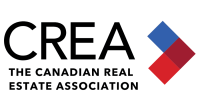
Smart Buildings Keep Getting Smarter
Daniel Galvan, CCIM, President at Coldwell Banker Commercial Rio Grande Valley in Texas, has a listing two and a half hours away in Laredo, TX. Instead of making the long drive, he has smart access to the building from anywhere.
His prospect arrives at the property and lets Galvan know. "I pop it up, see them on my camera, disarm the alarm system, and unlock the door," he explains. "They walk right in. I'm chatting with them while they're touring. They walk out. I reset the alarm." There's no wasted time on the road.
Or maybe your building has technology that allows it to anticipate weather patterns and automatically adjust the HVAC system.
Maybe you've installed face recognition access control in your apartment building. In the event of a fire, your building autonomously triggers sprinkler systems, closes fire-resistant doors, and communicates with emergency services.
Perhaps you own a hotel with room delivery robots and voice control, allowing guests to turn off lights and control temperatures from their beds.
Or maybe you have an automated parking garage that works like a big vending machine. Once a vehicle enters the structure, a lift hoist stores it on one of its parking decks. When the driver is ready to leave, they touch the car's key fob to an electronic pad, and the machine immediately retrieves the vehicle. The garage can accommodate significantly more cars than a traditional structure.
Futuristic? No. These are real-life examples of smart building technologies or "intelligent infrastructure."
What's a Smart Building?
A smart building uses advanced technologies to connect, analyze, and boost building performance and efficiency, including heating, lighting, energy consumption, air ventilation, fire safety, and security.
They often use the Internet of Things (IoT), which enables various connected devices, such as IoT occupancy sensors and building management systems (BMS), to communicate, typically through Wi-Fi and the Internet.
Smart buildings pump out a ton of data collected from the sensors so facilities managers can better understand a building's performance. And where there's data, there's an opportunity for artificial intelligence (AI). For example, AI-driven smart lighting systems adjust lighting levels based on available natural light and occupancy. AI can also learn user preferences and modify temperature based on specific tenants.
What's Driving Smart Technology?
Building owners/operators want to improve energy efficiency and lower operational costs, meet environmental regulations and ESG goals, enhance occupant safety/comfort, and provide digital amenities to draw tenants. All this makes a building more attractive to occupants and investors and boosts property value.
"I think smart buildings are the future of office and commercial real estate in general," says Galvan.
"There are so many aspects of intelligent infrastructure," says Timothy Churchwell, CCIM, Vice President of TEC Holdings, LLC. "A fire breaks out, and the elevator immediately shuts down, so safety issues exist. There are economic issues. There are energy efficiency issues." He says smart building technology is a must-have, especially in new construction.
According to a recent Precedence Research report, the smart building technology market is booming and anticipated to expand at a CAGR of 10.9%, reaching $256.18 billion by 2033.
Finances, Sustainability Go Hand in Hand
"You're going to have a higher net operating income on your property if you have a sustainable building," says Marika Erdely, MBA, CEA, LEED AP BD+C, Fitwel Ambassador and founder/CEO of Green Econome.
"It's going to be worth more money, therefore, now you've got an increase in the asset value," she notes. "Understanding where that energy efficiency or consumption lands and what you can do to make your building more energy efficient is all driven by money."
But that's not all. By optimizing energy usage and predicting equipment failures, smart buildings can significantly reduce their carbon footprints.
"Companies and investors are concerned about ESG strategy," says Erdely. "That means you must have efficient buildings, and you're reporting on your buildings and their emissions."
Jeffrey Gould, CCIM, Principal/Founder of Lineage Asset Advisors, Inc., notes that many companies, institutions, and REITS consider ESG a benefit of operational excellence.
"When you have a designation or certification like LEED, there's the conversation around tenant retention, attraction, and satisfaction," Gould explains. "Some of these technologies around operations prove the correlation that implementing these technologies and having operational excellence allows you to attract the cream-of-the-crop tenants in certain submarkets."
Gould says studies show that LEED-certified buildings are achieving rent premiums. Many tenants want sustainable offices and the convenience of advanced building amenities, including smart parking, personalized controls, and touchless entry.
Convincing Owners It's Worth the Cost
Building new smart buildings is expensive, and retrofitting existing buildings with smart technologies is also very costly. You must show owners that making these upgrades is economically feasible.
"Making the business case is probably the hardest part, and we have to swim upstream to start to get owners to see the business model and ROI and start implementing these tools and technologies," explains Gould.
Churchwell agrees. "You have to get into the cost analysis to retrofit systems. You have to find out if it's going to be economically feasible and what your return is," he notes.
For example, it will save me X percent on my utilities and cost me this much to install, Churchwell continues. "It becomes a matter of return on your investment. 'OK. We'll recuperate all our costs in the first four years, and then after that, we're free and clear.' Economic vitality is key."
ENERGY STAR® is a Good Tool
ENERGY STAR benchmarking compares a building's energy, water, and trash to similar buildings and past consumption.
"Say you add solar or do energy efficiency retrofits; you can see the metrics change in your building," says Erdely. "It's a good measurement and verification that your actions made sense."
Erdely also says smart building upgrades don't have to break the bank. Her firm works with an office building owner seeking to cut energy use. One of the technologies she's recommending is software that costs $8,200 a year, but she's projecting a payback in two or three months.
"That's because we can identify when they're going to hit their peak demand, and they're going to make adjustments to their HVAC, so they don't hit the peak, and they'll save money," Erdely explains.
Utility companies often charge higher rates during peak electricity usage times.
"When you're paying $26,000 a month in utility bills, $8,200 a year isn't that much," says Erdely.
More Challenges
In addition to convincing owners that the smart technology investment will pay off financially, facilities managers and occupants need training and support in using the smart building features.
"If you put something sophisticated in and don't have the engineer that can monitor it, it can be a problem," says Erdely.
There's also the rapid advancement of technology. "If you look at the AI space, that world is flying so rapidly," says Gould. "There's some fear of adoption because the technology is moving quickly."
Building Standards Driving Smart Tech
Building energy codes for new construction and Building Performance Standards (BPS) for existing buildings are becoming key to climate policies in many U.S. cities. The policies are intended to reduce the carbon footprint by requiring buildings to meet certain standards.
"Benchmarking laws are driving building owners to do work on their buildings," Gould says. Fifty-five jurisdictions in the U.S. currently have BPSs.
Additionally, utility incentives and tax benefits are available for smart technology, including retrofit financing for the Inflation Reduction Act and C-PACE (Commercial Property Assessed Clean Energy).
Retrofit Examples
The new owner of Warner View Corporate Center in Woodland Hills, CA., invested $1.5 million in energy-efficient building improvements, including LED lighting, HVAC upgrades, EV charging stations, wireless thermostats, occupancy sensors, evaporative cooling HVAC rooftop units, solar window film, and an energy monitoring system.
With an initial baseline ENERGY STAR Score of 26 (out of 100), the owner hired consultant Green Econome to help lower its operating expenses. Priorities included auditing and identifying inefficiencies and selecting methods covered by utility incentives and financing to offset project costs.
Erdely explains that the owner was "very gung-ho about doing everything to make it sustainable," and the building's ENERGY STAR Score increased to 96 after the project.
Rio Grande Valley Building Lands Large Lease
In another example, Galvan's company, Coldwell Banker Commercial Rio Grande Valley, recently signed a big lease with the U.S. Citizenship and Immigration Services (USCIS) to occupy one-third of a 60,000-sf, Class A multi-tenant office building in the Rio Grande Valley market.
Coldwell Banker is making major modifications to the existing building to earn LEED certification.
"The USCIS has requirements in its tenancy that the landlord make modifications to the building and its infrastructure — everything from thermostats and new HVAC units to windows," says Galvan.
The conversion has a price tag of $2.5 million to $3 million.
"There are no LEED-certified buildings in the Rio Grande Valley market, so we will be the first," says Galvan. The remaining two-thirds of the building will be marketed as multi-tenant.
"Sustainability is a hot topic in office leasing. It's popular, and people want to be associated with it," notes Galvan. "Modifying our office building to pursue LEED certification should help us with leasing activity. Being the first in the market should give us an edge. Hopefully, the investment draws increased rental rates."






